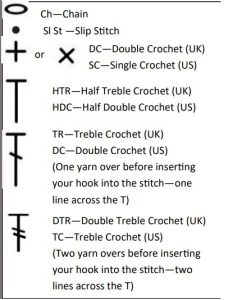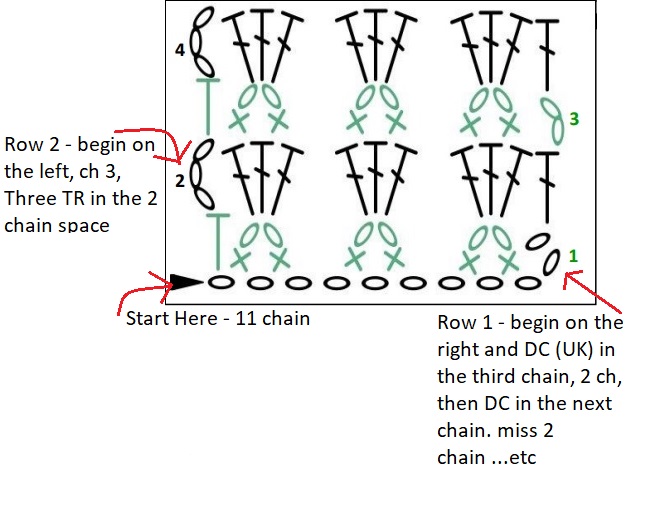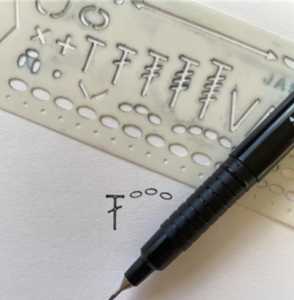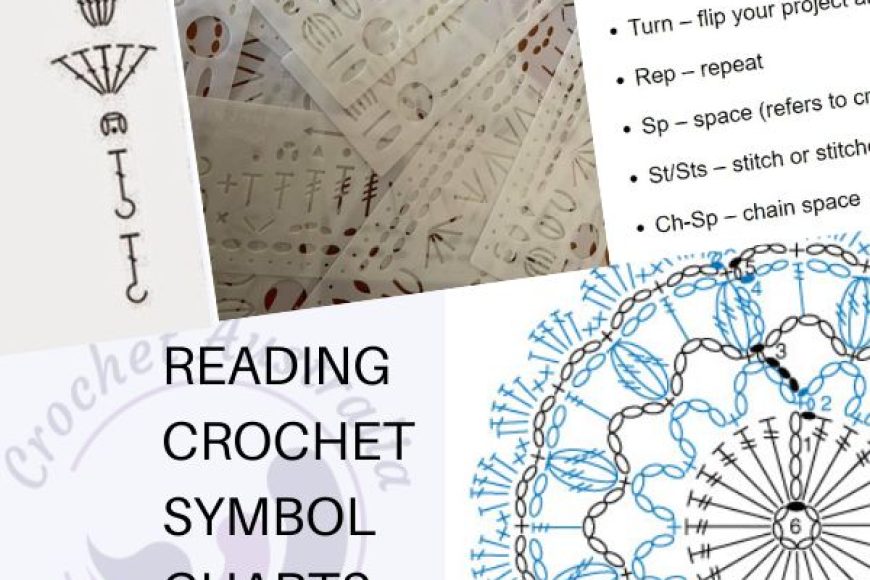Reading Crochet Symbol Charts
I have heard a few people say to me that they don’t like having patterns written in as a chart/symbol as they are daunted by it. I myself quite like the symbol charts, particularly for complex patterns where there a lot of words to describe the stitches/steps involved. In most cases I use the charts and words together—which incidentally is a great way to learn to read the charts.
But I find the biggest advantage of crochet charts is that they overcome the language barrier—both patterns written in a foreign language and the US v UK terminology differences—allowing access to a much wider range of patterns.
Reading symbol charts is actually not as difficult as you think. Each symbol represents a stitch. These symbols are combined together and arranged in a diagram that forms a rough picture of what your crochet will look like when it is finished. For the most part, each symbol actually looks like the stitch it represents from the right side of the work.
While written patterns are read left to right and top to bottom, like any other written text, the symbol charts are read in the completely opposite direction resembling the way in which any right-handed crocheter actually works—bottom to top and right to left then left to right when working in rows or from the centre to the outside and right to left when working in the round.
Most charts will have a legend to help you interpret the symbols, however they are universal and I have noted the basic stitches here:
 As you can see from this, the symbols to a large extent look like the stitches in real life. They also have the added advantage of helping guide how many yarn overs you need to create the stitch.
As you can see from this, the symbols to a large extent look like the stitches in real life. They also have the added advantage of helping guide how many yarn overs you need to create the stitch.
Generally the chart will highlight the starting point with a triangle, include a number for each row/round and in many cases use alternating colours for each row/round to make it easier to follow as per the diagram here. 
The other advantage with the symbol charts is that they also show where the stitches should be made. For example if you are increasing you can see which exact stitch the increase is to be made in. In this example, three stitches are made in the second and sixth chain.
 I also like to convert complex written patterns into symbol charts myself so that I can ensure I understand the directions—to do this I use the Crochet Cypher Tool to help get a consistent presentation.
I also like to convert complex written patterns into symbol charts myself so that I can ensure I understand the directions—to do this I use the Crochet Cypher Tool to help get a consistent presentation.
For a fully comprehensive list of symbols with their UK and US definition you can’t go past the chart produced by Dabbles and Babbles.
Now you’ve got the basics, peruse the pattern books that have symbols as part of their structure here


